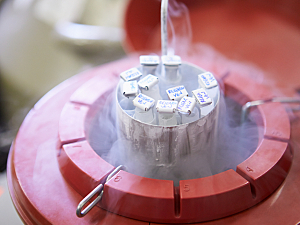For men with non-obstructive azoospermia (NOA) who want to conceive a biological child, testicular sperm extraction (TESE) is the only option. Couples must make a few decisions about the surgical approach:
- Microsurgical TESE (mTESE), now the gold standard because of higher success rates vs. conventional TESE (cTESE), which is less time intensive, less costly, and does not require microsurgical expertise or access to a surgical microscope. It can be performed in conjunction with programmed ovulation induction and oocyte retrieval vs. frozen TESE, performed electively with a plan to use thawed sperm for intracytoplasmic sperm injection (ICSI) at a future date
- Conventional TESE, which also can be performed frozen vs. fresh
Most U.S. residents have to bear the costs of TESE out-of-pocket, so researchers at Brigham and Women’s Hospital recently constructed a computer model for financial decision analysis. They concluded frozen mTESE was always the most financially optimal decision regardless of microsurgical testicular sperm extraction cost and the couple’s willingness to pay.
Tracy X. Han, MD, a resident physician in the Brigham’s Department of Surgery, Martin Kathrins, MD, associate surgeon in the Division of Urology, and colleagues published the findings in Andrology.
Methods
The researchers created a decision tree comparing five surgical approaches:
- Fresh cTESE with and without backup sperm cryopreservation for later use
- Fresh mTESE with and without back-up cryopreservation
- Frozen mTESE
Frozen cTESE was not examined given the relative rarity of that approach.
Success was defined as pregnancy after one ICSI cycle. The model assumed a lack of insurance coverage for assisted reproductive therapies.
Surgical sperm retrieval rates, out-of-pocket costs for various surgical approaches, the risk of post-thaw cellular loss following sperm cryopreservation, sperm processing costs, and storage costs were estimated based on a systematic literature review.
Base Scenario
In the base scenario, willingness to pay for pregnancy after one cycle of IVF/ICSI was assumed to be $8,000, reflecting an average from a 2006 study published in Fertility and Sterility that was converted to 2020 dollars. The model predicted the net loss for a couple as follows:
−$17,523 for fresh mTESE
−$17,545 for fresh cTESE
−$9,624 for frozen mTESE
−$18,210 for fresh mTESE with cryopreservation
−$17,991 for fresh cTESE with cryopreservation
In sensitivity analyses where willingness to pay and mTESE cost were varied, frozen mTESE was always associated with the lowest expected net loss.
Subcategory Analyses
Because frozen mTESE dominated all other options, the team performed subcategory sensitivity analyses in which the comparisons were more restricted. Willingness to pay varied from $4,000 to $20,000, and out-of-pocket costs for mTESE varied from $1,000 to $9,000:
- Fresh mTESE vs. fresh cTESE—Except in two scenarios with low willingness to pay, mTESE was consistently associated with lower expected net loss than cTESE, which is not surprising given the higher probability of successful sperm retrieval with mTESE
- Fresh mTESE with cryopreservation vs. fresh cTESE with cryopreservation—Interestingly, scenarios with decreasing willingness to pay and lower mTESE costs favored cTESE over mTESE
Accounting for IVF Costs
The costs of assisted reproduction are more significant contributors to the financial burden of mTESE and cTESE than the cost of sperm retrieval. Therefore, the team conducted an analysis in which IVF costs and willingness to pay were varied. mTESE cost was fixed at $4,000, and cTESE cost was fixed at the base value of $788. For all scenarios, frozen mTESE was more financially optimal than fresh cTESE.
A Tip for Clinics
In this study, fresh cTESE with cryopreservation dominated scenarios in which both willingness to pay and the cost of fresh mTESE with cryopreservation were lower. Since cTESE is typically less expensive than mTESE, couples with a lower willingness to pay should consider opting for cTESE despite the decreased probability of successful sperm retrieval.
